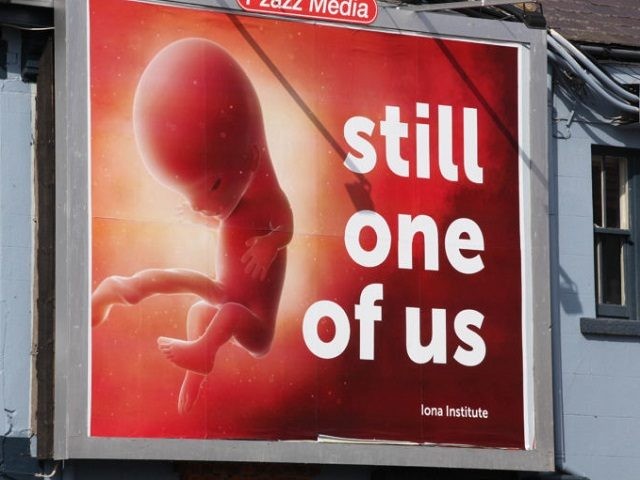A coalition of pro-abortion groups filed a lawsuit against the Ohio Ballot Board this week, claiming that officials injected “politicized, deceptive” language — including the term “unborn child” — into the approved summary of a proposed abortion ballot amendment.
Last Thursday, the Ohio Ballot Board voted 3-2 along party lines to approve a new summary of the radical abortion ballot initiative, drafted by Ohio Secretary of State Frank LaRose, rather than the full text approved by the state attorney general earlier this year. Ohioans will read the summary of the amendment, now called “Issue 1,” when they vote on November 7, or during early voting beginning on Oct. 11.
Five voters and Ohioans United for Reproductive Rights — a coalition comprised of far-left groups like URGE, ACLU of Ohio, and Planned Parenthood Advocates of Ohio — filed the lawsuit in the Ohio Supreme Court on Monday, and asked the state’s high court to order the ballot board to adopt the full text of the constitutional amendment or adopt language that “properly and lawfully describes the amendment.”
“The Amendment’s text is direct, clear, and concise — and by definition accurate. The adopted ballot language is anything but,” the lawsuit claims. “The ultimate question before the Court is accordingly quite simple: whether the people of Ohio can be trusted, on November 7, to read, interpret, and weigh the Amendment’s text (or an accurate summation of it) for themselves, or whether they will instead be subjected to a naked attempt to mislead perpetrated by their own elected officials.”
The original text of the proposed amendment is extremely broad and makes no differentiation between minors and adults, instead opting to use the term “individual.”
The abortion ballot measure states that “every individual has a right to make and carry out one’s own reproductive decisions, including but not limited to decisions on: contraception, fertility treatment, continuing one’s own pregnancy, miscarriage care, and abortion.”
Under the amendment, the state would also not be allowed to:
…directly or indirectly, burden, penalize, prohibit, interfere with, or discriminate against either an individual’s voluntary exercise of this right or a person or entity that assists an individual exercising this right, unless the state demonstrates that it is using the least restrictive means to advance the individuals health in accordance with widely accepted and evidence-based standards of care.
Critics of the ballot measure have urgently warned that the amendment would decimate parental rights, lead to abortion on demand, and even allow minors to pursue sex-change procedures. Coalition members have notably long campaigned to end parental involvement laws.
The ACLU of Ohio is responsible for crafting the broad language of the proposed abortion amendment, along with other groups such as Planned Parenthood. Left-wing fact-checkers have quickly asserted that the amendment would not impact parental rights. But when local media questioned the ACLU of Ohio about whether the language of the measure would undo parental consent and notification laws, the organization vaguely indicated that those laws would not stand if the amendment passes.
The new summary switches the term “fetus” to “unborn child,” and removes the list of other so-called “reproductive rights” except for abortion.
“[T]he Amendment uses the term ‘unborn child’ four times, though it appears nowhere in the measure,” the lawsuit argues. “That fraught term is in stark contrast to the neutral, accurate, and scientifically accepted terminology that the Amendment itself uses and defines. The ballot language thus unnecessarily introduces an ethical judgment—at what stage of development a zygote, embryo, or fetus becomes a “child”—which is beyond the scope of the measure and about which Ohioans profoundly disagree.”
The new summary states that the amendment would “always allow an unborn child to be aborted at any stage of pregnancy, regardless of viability” instead of the original text stating that abortions may be prohibited after viability, “[b]ut in no case may such an abortion be prohibited if in the professional judgement of the pregnant patient’s treating physician it is necessary to protect the pregnant patient’s life or health.”
The new language also includes the term “pregnant woman” rather than “pregnant patient,” and uses the phrase “citizens of the state of Ohio” rather than the “state of Ohio” to talk about the parameters around limiting abortions in the state.
“These and other defects set out below render the ballot language unlawful. Contrary to the clear directive of Article XVI of the Ohio Constitution, the ballot language does not ‘properly identify the substance of the proposal to be voted upon.’ Instead, it attempts to ‘mislead, deceive, or defraud the voters,'” the lawsuit claims.
Ohio Right to Life President Mike Gonidakis told the Cincinnati Enquirer that he expects the Ohio Supreme Court will reject the lawsuit.
“The ballot board got it right with a scientifically accurate depiction of the abortion industry’s ballot language,” Gonidakis said. “Planned Parenthood is obviously worried that Ohioans are realizing that the language is dangerous and a bridge too far for even pro-choice women.”
The case is Ohioans United for Reproductive Rights v. Ohio Ballot Board, No. 2023-1088 in the Supreme Court of Ohio.
Katherine Hamilton is a political reporter for Breitbart News. You can follow her on Twitter @thekat_hamilton.

COMMENTS
Please let us know if you're having issues with commenting.